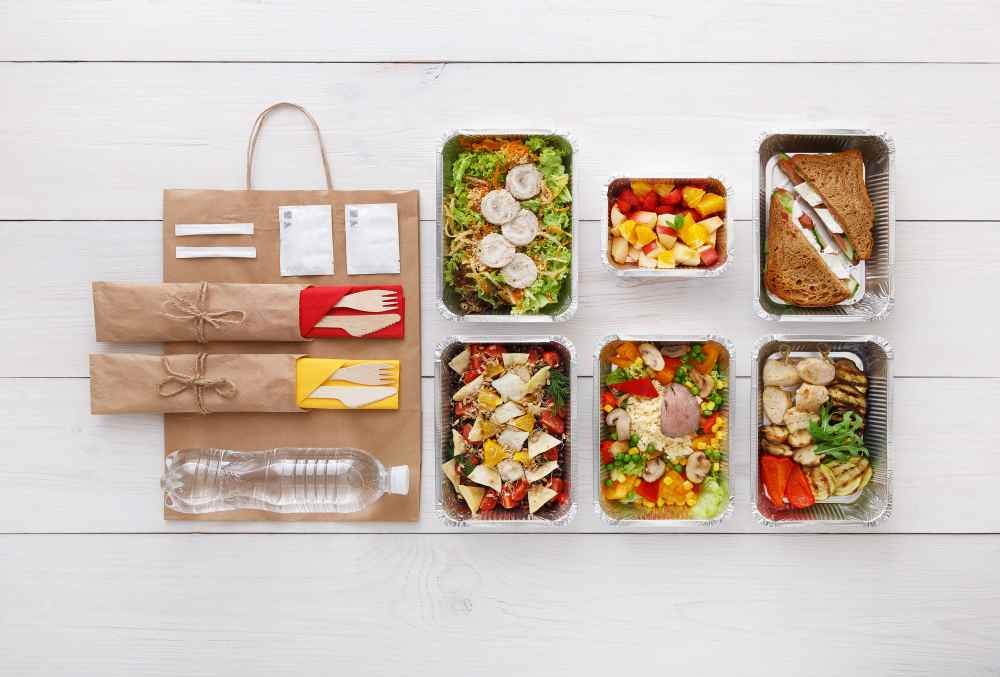India’s packaging industry is a powerhouse, projected to reach a staggering $204.81 billion by 2025. Fueled by e-commerce, rising disposable incomes, urbanization, and a thriving FMCG and pharmaceutical sector, the demand for innovative, sustainable, and compliant packaging solutions is exploding. While this presents immense opportunity, the landscape is fiercely competitive. Simply manufacturing boxes or bags is no longer enough. To rise above the fray and build a genuinely successful packaging supply business in India requires a strategic blend of quality, innovation, compliance, customer-centricity, and forward-thinking. Here’s the blueprint:
1. Uncompromising Quality & Consistency: The Non-Negotiable Foundation
Success starts and ends with quality. In an era where brand reputation hinges on product integrity, your packaging supplier is the first and last line of defense.
- Robust Quality Management Systems (QMS): Implement and rigorously adhere to international standards like ISO 9001. This isn’t just a certificate; it’s a framework for consistent processes, defect reduction, and continuous improvement.
- Material Mastery: Source high-quality, consistent raw materials from reliable vendors. Understand material properties (barrier strength, tensile strength, moisture resistance) and their impact on the final product’s performance.
- Precision Manufacturing: Invest in modern, well-maintained machinery capable of delivering high precision and repeatability. Automation, where feasible, minimizes human error and enhances consistency.
- Stringent Testing: Establish in-house testing labs or partner with accredited labs for critical parameters:
- Physical: Bursting strength, compression resistance (crucial for corrugated boxes), seal strength.
- Chemical: Migration testing for food/pharma contact packaging (FSSAI compliance), ink adhesion, solvent residues.
- Print Quality: Color accuracy, registration, barcode readability.
- Traceability: Implement systems to track materials and processes, enabling swift root cause analysis if issues arise.
2. Innovation & Differentiation: Solving Problems, Not Just Supplying Boxes
The market rewards suppliers who bring more than just basic packaging. Become a solutions provider.
- Material Innovation: Explore and offer sustainable alternatives (bioplastics, compostable films, recycled content), functional materials (high-barrier films, active packaging), or cost-effective substitutes without compromising quality.
- Design Capabilities: Invest in in-house design expertise or strong partnerships. Offer structural design (optimizing size, shape for protection and cost), graphic design (enhancing shelf appeal), and prototyping services. Help clients minimize material usage while maximizing protection.
- Smart Packaging: Explore integrating technologies like QR codes for traceability/engagement, NFC tags, or temperature indicators, especially relevant for pharma, high-value goods, and brand engagement.
- Process Innovation: Optimize production processes for speed, efficiency, and waste reduction (Lean Manufacturing principles). Offer value-added services like kitting, sequencing, or just-in-time (JIT) delivery.
3. Mastering Compliance & Sustainability: Beyond Legal Obligations to Competitive Edge
Regulatory adherence (as outlined in the previous article) is the baseline. Success lies in embracing it as a strategic advantage and integrating sustainability.
- Proactive Compliance: Don’t just react to regulations. Stay ahead of evolving mandates (FSSAI, BIS, EPR, PWM Rules). Build relationships with regulatory bodies. Internal compliance audits are crucial.
- Sustainability as Core Strategy:
- Material Sourcing: Prioritize recycled content, responsibly sourced paper (FSC/PEFC certified), and explore bio-based polymers.
- Lightweighting: Continuously innovate to use less material without sacrificing performance.
- Waste Reduction: Implement zero-liquid discharge (ZLD) where applicable, optimize cutting patterns, recycle production waste.
- EPR Leadership: Go beyond mere registration. Develop robust EPR plans, partner effectively with PROs, and transparently report progress. This builds trust with environmentally conscious clients.
- Energy Efficiency: Invest in energy-efficient machinery and renewable energy sources (solar).
- Communicate Your Green Credentials: Certifications (ISO 14001, FSC, GRS – Global Recycled Standard) and transparent sustainability reports resonate powerfully with modern brands.
4. Unparalleled Customer Focus & Service: Building Loyal Partnerships
In a crowded market, exceptional service is a key differentiator.
- Deep Understanding: Truly understand your client’s business, challenges, target audience, and supply chain dynamics. Are they an e-commerce giant needing damage-proof, space-efficient boxes? A premium chocolate brand needing exquisite, temperature-stable packaging?
- Reliability & On-Time Delivery (OTD): Consistently meet deadlines. Implement robust production planning and logistics management. Delays can cripple a client’s operations.
- Responsiveness & Communication: Be proactive, transparent, and easy to communicate with. Quickly address queries, concerns, and provide regular updates.
- Flexibility & Problem-Solving: Be adaptable to changing requirements, short runs, or urgent orders. Act as a partner in solving their packaging challenges, not just an order-taker.
- Technical Support: Offer expert advice on material selection, design optimization, and compliance issues.
- Value Engineering: Actively work with clients to find cost-effective packaging solutions without compromising quality or performance.
5. Strategic Operations & Market Savvy: The Engine of Growth
Efficient operations and smart market positioning fuel sustainable success.
- Cost Optimization & Efficiency: Continuously seek ways to reduce production costs through efficient processes, bulk purchasing (without stockpiling), waste minimization, and energy savings. Offer competitive pricing without sacrificing margins.
- Technology Adoption: Leverage ERP systems for integrated operations (inventory, production, finance, sales). Explore automation (automated guided vehicles, robotic palletizing), digital printing for short runs/customization, and data analytics for demand forecasting and process improvement.
- Talent Acquisition & Retention: Invest in skilled labor (machine operators, designers, QA personnel) and provide ongoing training. Foster a culture of quality and innovation.
- Robust Supply Chain: Build resilient relationships with raw material suppliers. Manage inventory effectively to avoid stockouts or excessive holding costs.
- Strategic Marketing & Sales:
- Targeted Approach: Focus on specific high-growth sectors (e-commerce, pharma, organic food, luxury goods) where your strengths lie.
- Digital Presence: Maintain a professional website showcasing capabilities, certifications, and case studies. Utilize LinkedIn for B2B networking.
- Industry Engagement: Participate in trade shows (e.g., Pamex, PackPlus), join industry associations (e.g., IPPMA – Indian Printing Packaging & Allied Machinery Manufacturers Association).
- Building a Reputation: Deliver consistently excellent service and quality; word-of-mouth remains powerful.
Conclusion: Packaging Success is a Multi-Layered Construct
Becoming a successful packaging supplier in India demands moving far beyond basic manufacturing. It requires building a reputation as a reliable, innovative, compliant, and customer-centric partner. The winners are those who master the intricate dance of unwavering quality, continuous innovation, proactive compliance and sustainability, exceptional service, and efficient, strategic operations. In a market driven by brand experience, sustainability pressures, and e-commerce logistics, the packaging supplier who offers intelligent solutions, not just containers, will not only survive but thrive. The box is just the beginning; success lies in everything you put into it – and around it.
FAQs: Achieving Success as a Packaging Supplier in India
Q: Besides quality, what’s the single biggest factor that sets successful suppliers apart?
A: Customer-Centricity & Service. Consistently reliable on-time delivery, proactive communication, flexibility to handle urgent orders or changes, and acting as a true problem-solving partner (e.g., offering value engineering, technical advice) build irreplaceable loyalty. Clients remember how you made them feel and how you handled challenges long after the price is forgotten.
- Q: How important is innovation for a packaging supplier, especially a smaller one?
A: Critically Important, Regardless of Size. Innovation isn’t just about high-tech solutions. For smaller suppliers, it could be:- Offering unique customization options faster than larger players.
- Specializing in a niche material or product type (e.g., compostable pouches, high-end cosmetic boxes).
- Implementing process innovations that reduce costs or lead times.
- Finding novel, sustainable local material sources. Staying stagnant means being left behind.
- Q: Is sustainability just a cost burden, or can it actually help my business?
A: It’s a Major Competitive Advantage & Future Imperative. While initial investments might be needed, sustainability:- Attracts Clients: Major brands (FMCG, Retail, Pharma) have strict sustainability goals and mandate eco-friendly packaging from suppliers.
- Reduces Costs: Lightweighting uses less material, waste reduction lowers disposal costs, energy efficiency saves on power.
- Mitigates Risk: Proactive compliance with EPR and evolving regulations avoids fines and shutdowns.
- Enhances Brand Reputation: Positions you as a responsible, forward-thinking partner. It’s increasingly a cost of doing business, not an optional extra.
- Q: How can I compete with larger suppliers who have more resources?
A: Leverage Agility, Niche Focus, and Service Excellence.- Niche Specialization: Become the go-to expert for a specific material (e.g., rigid plastics, luxury paperboard), industry (e.g., organic food, ayurvedic products), or service (super-fast prototyping, ultra-short runs).
- Superior Service: Offer more personalized attention, faster response times, and greater flexibility than large corporations.
- Local Advantage: Build strong relationships with local/regional clients, offering faster delivery and understanding their specific needs intimately.
- Strategic Partnerships: Collaborate with complementary suppliers to offer broader solutions without massive internal investment.
- Q: What operational areas should I focus on improving first for growth?
A: Prioritize these foundational elements:- Cost Efficiency & Waste Reduction: Analyze production processes for bottlenecks and material waste. Even small savings compound significantly.
- On-Time Delivery (OTD): Nothing erodes trust faster than missed deadlines. Invest in production planning and reliable logistics.
- Technology Basics: Implement a robust ERP system for integrated inventory, production, and financial management. This provides visibility and control essential for scaling.
- Talent: Ensure you have skilled, well-trained machine operators and QA staff. Quality and efficiency start with people.
- Supply Chain Resilience: Secure reliable raw material sources and manage inventory effectively to avoid production stoppages.




